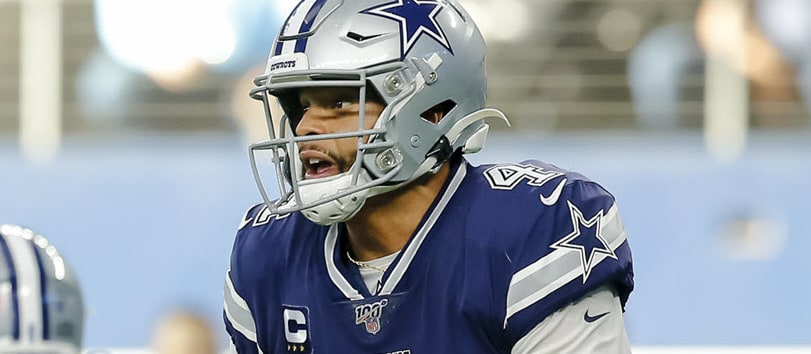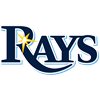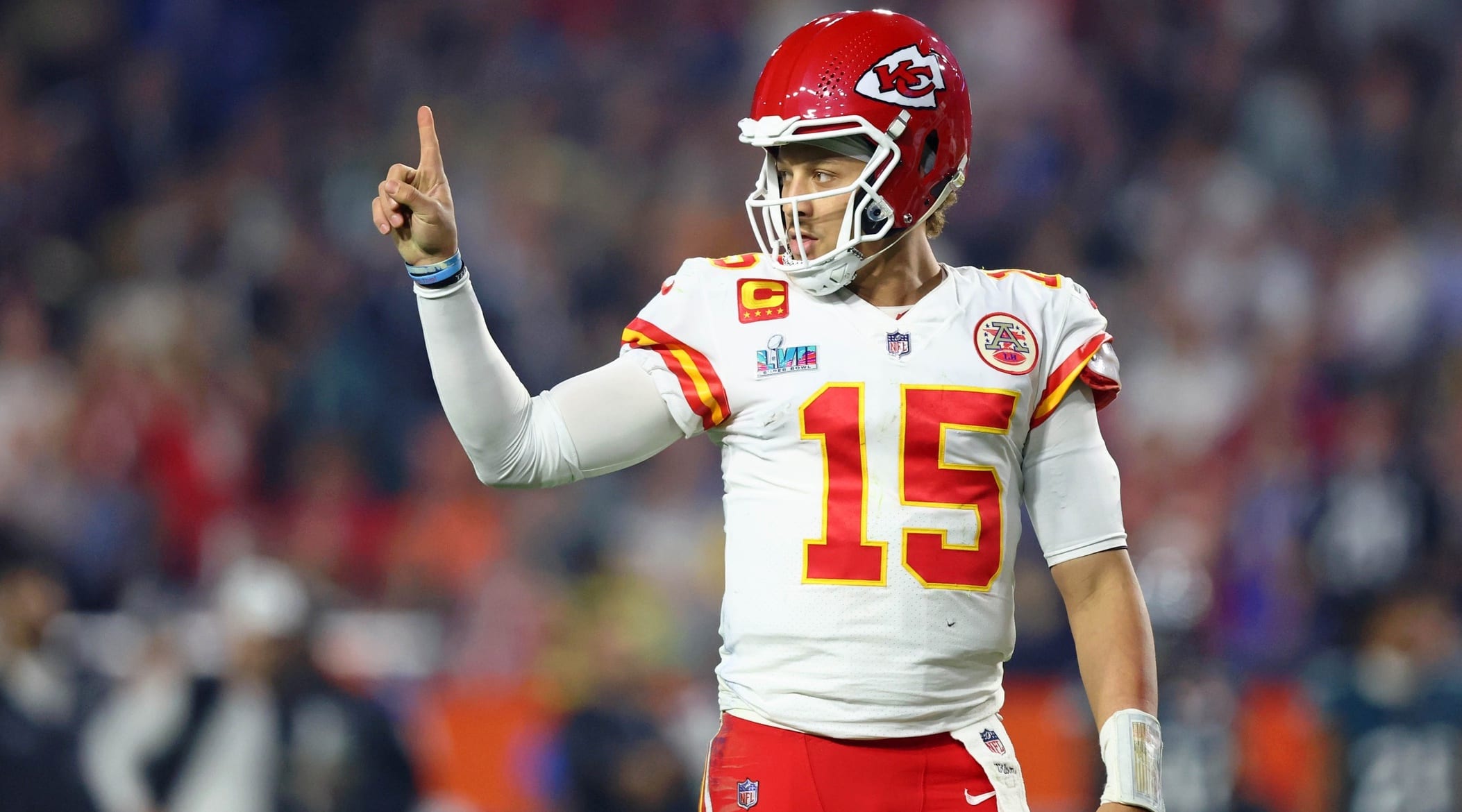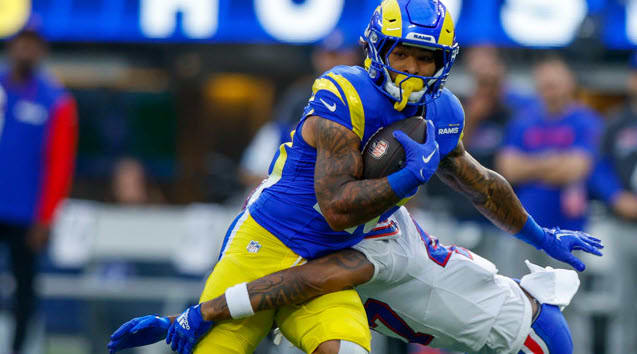The Cowboys signal caller has been one of the biggest injury topics entering this year's fantasy drafts. He started training camp with concerns about his surgically repaired ankle following last year's gruesome open dislocation and fracture. A new injury, this time to his throwing arm, surfaced during the first few days of camp, amplifying the anxiety surrounding Prescott. A report over the weekend that suggested Prescott may not be 100 percent for the entire season did little to ease these fears. Let's take a look at Dak's situation to get a better gauge on where you should have the Dallas quarterback on your draft board.
Let's start with the shoulder strain. Prescott suffered a strained latissimus dorsi in his right shoulder. The "lat" is a broad muscle that covers the back and has various attachment sites along the spine, ribs and back. The muscle eventually anchors itself into a small groove in the upper arm bone known as the humerus. The lat is active in multiple shoulder motions including extension, internal rotation, adduction and bringing a straight arm away from the body in a motion known as horizontal abduction. Furthermore, the large muscle contributes to motion of the spine, including side-to-side bending and extension.
Latissimus dorsi muscle strains are common in MLB pitchers, especially as they increase their workload during Spring Training, but occur less frequently in football. Based on this trend, it was unsurprising to see the Dallas medical staff reach out to the New York Yankees
The Cowboys signal caller has been one of the biggest injury topics entering this year's fantasy drafts. He started training camp with concerns about his surgically repaired ankle following last year's gruesome open dislocation and fracture. A new injury, this time to his throwing arm, surfaced during the first few days of camp, amplifying the anxiety surrounding Prescott. A report over the weekend that suggested Prescott may not be 100 percent for the entire season did little to ease these fears. Let's take a look at Dak's situation to get a better gauge on where you should have the Dallas quarterback on your draft board.
Let's start with the shoulder strain. Prescott suffered a strained latissimus dorsi in his right shoulder. The "lat" is a broad muscle that covers the back and has various attachment sites along the spine, ribs and back. The muscle eventually anchors itself into a small groove in the upper arm bone known as the humerus. The lat is active in multiple shoulder motions including extension, internal rotation, adduction and bringing a straight arm away from the body in a motion known as horizontal abduction. Furthermore, the large muscle contributes to motion of the spine, including side-to-side bending and extension.
Latissimus dorsi muscle strains are common in MLB pitchers, especially as they increase their workload during Spring Training, but occur less frequently in football. Based on this trend, it was unsurprising to see the Dallas medical staff reach out to the New York Yankees and Texas Rangers to discuss the best approach to care. The advice appears to have helped, as Prescott has progressed without an issue and remains in line to start Week 1.
As for the ankle, Prescott suffered a traumatic injury that resulted in multiple surgeries. Injuries of this magnitude deform tissue, including muscle, ligament and bone. It takes a substantial amount of time for these tissues to return to full strength and display the same biomechanical properties as healthy tissue. So in a way, yes, Prescott may not be 100 percent this season. However, that doesn't mean he will be unable to play or produce at a high level. I've been pleased by Dallas' approach to Prescott's health during the preseason and expect him to remain a valuable fantasy quarterback.
The Jaguars rookie running back suffered a foot injury in the team's recent preseason outing. The injury has been diagnosed as a midfoot sprain, with more tests pending to determine the severity of the damage.
The midfoot is located where the five metatarsal bones meet multiple tarsal bones, including the cuboid and three cuneiform bones, to form the peak of the arch of the foot. These articulations form the five tarsometatarsal joints of the foot that provide stability to the overall integrity of the foot. Collectively, this area is often referred to as the Lisfranc joint, and, as a result, the terms midfoot sprain and Lisfranc sprain are often used interchangeably. Multiple ligaments, including the durable Lisfranc ligament, fortify the area.
Midfoot/Lisfranc injuries are notoriously problematic for NFL players and have impacted the careers of players like Cam Newton, Ben Roethlisberger, Maurice Jones-Drew, and Darren McFadden. However, the degree of injury, including possible displacement and any potential bone-related damage, generally dictates recovery time, which includes a wide range of possibilities. For example, the strength of the Lisfranc ligament can often lead to an accompanying avulsion fracture as it pulls way a piece of the bone.
While initial X-rays on Eienne's foot have come back negative, the team will continue to evaluate the severity of the ligament damage. They have already ruled him out indefinitely, and even a mild sprain could threaten his Week 1 availability. As a result, James Robinson's position atop the Jacksonville depth chart looks more convincing with Carlos Hyde settling in as the backup.
UPDATE: Additional testing revealed bad news as the ligament tear was significant, and surgery will be needed. Jacksonville has already placed him on the IR, ending his season.
Turf Burns
Saquon Barkley: I continue to preach patience with Barkley and remain confident he can bounce back from last year's torn ACL. The Giants continue to monitor his workload and limit his overall level of participation as they wisely work him back to top playing form. I fully expect this to carry over into the start of the regular season as New York continues to slow play things. However, I suspect he will start to see a bigger workload with each subsequent outing and return as one of the top fantasy threats as the year progresses. I understand not wanting to invest the top overall pick in the 24-year-old but remain opportunistic as the first round progresses.
Stefon Diggs: Josh Allen's favorite target continues to nurse an undisclosed knee injury. Fortunately, he recently returned to practice albeit in a limited capacity. As long as Buffalo remains tight-lipped regarding specifics, fantasy managers will simply have to keep their fingers crossed that he continues to progress.
Clyde Edwards-Helaire: The Chiefs running back suffered a low-grade ankle sprain in Friday's preseason contest against the Cardinals. The team does not believe it is a high-ankle sprain, and the second year back should have enough time to rest and recuperate before Week 1.
Darrell Henderson: With starter Cam Akers lost for the year to a torn Achilles, the Rams can ill afford another major injury in the backfield. Luckily, Henderson's recent thumb injury appears to be just a mild injury and should not impact his playing status for Week 1. There were reports that stated testing revealed a sprain but no ligament damage. That's technically impossible, as a sprain is an injury to a ligament. What it likely means is that the sprain is a low-grade injury, and the primary ligament fibers remain intact. Look for Henderson to be limited in the team's remaining preseason action but be ready to roll for the regular season.
D'Andre Swift: Swift has been limited for the past few weeks with a groin strain. The groin muscles are all known as the adductors and help with lateral movement. For a running back this can limit his ability to move side-to-side when seeking out gaps in the line or evading would-be tacklers. Fortunately, the strain appears mild, and the Lions admitted they are taking a conservative approach with his recovery. Barring a setback, look for Swift to remain the team's feature back for Week 1.
Carson Wentz: The Colts quarterback is back on the practice field after undergoing a procedure to remove a fragmented piece of the fifth metatarsal in his left foot. He has reportedly looked sharp and has a realistic opportunity to be the starter in Week 1.



























